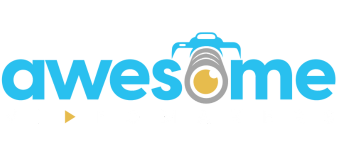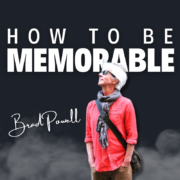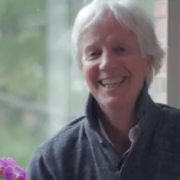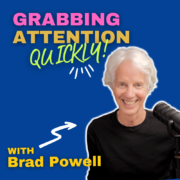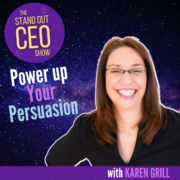147. How to be memorable with Brad Powell
After you give a talk, or make a presentation, or make a video, what if no one remembers what you said?
What if after all your posting on social media people don’t remembers a thing you shared…?
A recent study showed that when someone posts online or gives a talk… after just 48 hours
80% of the information is gone!
Let that sink in: people can’t recall 80% of what you say.
Whenever you create content, if all you do is share information people remember only 20% (or less)
Which begs the question, if all you’re sharing is information, how are you bringing value?
So what can you do to be more memorable – to make sure folks remember what you said?
Well, that’s exactly what I’m covering in this episode – my simple 3-step process for ensuring that people remember you & your content – and think of you the next time they need what you offer.
Listen up!
__
Hi,👋 I’m Brad. I help business leaders, consultants & coaches create a short-form video sales system that makes selling easy. In a 1-hour remote interview you get 1 month of short form video content that does your selling for you – scheduled across all your social media channels. Imagine having dream clients excited to buy from you because they’ve been pre-sold by your videos.
Click here to learn more
Transcript
Brad Powell:
Welcome to the Standout Business Show. I’m Brad Powell. Today, we are talking about how to always be sure that people will remember what you say. The reason for this whole conversation is that I saw a study that shows that when you give a presentation, when you stand up to give a talk or when you make a video, like what I’m doing right now, or even when you post on social media and you’re sharing all this information, the people who are hearing you or seeing your content they’re going to forget 80% of what you just said 80%. So it’s almost like no matter what you do, people are only going to remember a little tiny bit of what you have to share with them in the next day or two or three and by a week later it’s gone. So, with everyone doing all this content, marketing and sharing all this information, what are you going to do, like, how do you solve this problem so that you’re not on this like eternal workaholic gerbil wheel thing of I’m giving you all this stuff, I’m trying to give you value, and if you do that and people just forget about it, like if they just forget most of everything you’ve said, what’s the point? This is a huge problem. This is what we’re going to tackle today. This is what I’m going to try and solve for you. It’s not that hard. It’s actually much easier than you think. I’m going to show you the number one way to ensure that people will remember what you said. Sound good, are you intrigued? All right, so with that, let’s start the show. Here we go.
Brad Powell:
Well, I’m going to start with this. Here I am sitting on the couch and I’m watching Disney’s latest version of Cinderella, and I’m watching it with my daughter, my 10-year-old daughter. Thanks to my daughter, I’ve gotten to see a whole bunch of kids’ movies Disney, princess movies, pixar stories. I really like the opportunity to watch these films with my daughter, partly because often the story is teaching something that is actually going to help her grow into a stronger, better young woman, and that’s always a good thing. It also gives us, the two of us, something to talk about, something to connect on, and occasionally, or maybe more often than I would have imagined, there’s cool lessons in these films that I get and I just like, wow, it just sort of blows me away, and this is an example of that. So we’re watching this film, cinderella, and in the last scene, this is what’s going on.
Brad Powell:
Cinderella has, up to this point, had this false, fake pretense. I mean, she went to the ball as somebody who she wasn’t. You know, it was complete make-believe. Now, like at this moment, the prince has been scouring the countryside to try and find her again. He’s located her house.
Brad Powell:
Cinderella is up in the attic and she’s literally hiding out up there because the jig is up, like the prince knows. She’s up there and now she has to come down and reveal herself who she actually is to the prince. And in the scene she’s walking out of the closet where she’s been hiding away and she comes to the landing at the top of the staircase and she catches her reflection in the mirror. And at that moment she hears in her mind her mother’s voice saying have courage and be kind. And I just I’m going to play this scene for you Would who she was, who she really was, be enough? There was no magic to help her this time. Who she really was would be enough. There was no magic to help her this time.
Brad Powell:
This is perhaps the greatest risk that any of us will take to be seen as we truly are have courage and be kind. That message, it’s so universal and it’s so appropriate for the work that I do. I mean, how many times has it happened that for me personally, when I’m about to do something like even when I’m getting on camera and trying to talk like this, there’s a little voice in my head saying am I good enough, am I worthy enough? If I’m showing myself as I truly am, is that going to be enough? And then taking that to heart, of saying, well, in this moment, like I know, I know and I know because I work with lots of clients who face this same barrier, the same internal holding back barrier really the answer in that moment is yes, have the courage to take the next step and also, in that moment, be kind to yourself, be really kind to yourself, and try and push those voices off to the side and say, no, really, I am good enough just as I am. This is the person who I am, and the more I show who I am, the more I’m going to connect with the people who I really need and want to connect with.
Brad Powell:
This is where I want to dive into today, when we’re answering the question how do you get people to remember you? How do you get people to remember your message and the thing that you stand for and the things that you believe in. How do you get people to remember that and actually your whole thing, like your whole way of being, becomes memorable? Well, you want to share this human experience, this experience of you as a human. So why did I share this story, the Cinderella story, at the beginning? Well, when you’re posting stuff and or you’re making a video, you want to do this human experience and there’s probably no better way to do that than number one, to actually make a video, to be on video so that you are the one doing the presentation and they’re actually seeing you. People are understanding all things about you and your personality and your quirks, the things that make you a little bit distinctive, and you want to give them some kind of experience which is bringing out an emotion and actually has stakes that people care about and has meaning, something that people can believe in.
Brad Powell:
Really, this is all about telling stories and sharing a narrative of where all of these things are happening, and sharing a narrative where here’s someone who wants something, and a lot of these should be personal. These should be your own story. So in this case, I started that Cinderella story by talking about my own experience of watching it with my daughter. And simply by sharing that little bit of detail, I am making myself relatable as a guy who has a daughter, a little girl all the dads out there who have daughters, all the mothers who have daughters, you know. And or now you have another picture. It’s like, oh, he’s got a little girl, and whether or not you have your own daughter, there’s some kind of emotional connection there, simply because you know that detail about me and that I like sitting on my couch with my daughter watching Disney movies. What kind of a guy likes to sit with his daughter and watch Disney movies? Well, my kind of guy, and maybe you’re that kind of person too. All of that, like just that little detail, has human experience in it and it has certain emotions in it, and that stuff is what will stick and that’s the stuff that becomes more memorable. And so now, when you think about me in the future, that detail of oh yeah, brett has a daughter and he likes to watch Disney films, like that’s the kind of thing that you’ll actually remember. And these are the kinds of things that you can do in your communication and really bring more of yourself into your communication. So it’s more personable. That’s really.
Brad Powell:
Step one is like, whatever you’re doing in terms of sharing your information, people make the mistake and the more professional they act, the bigger this mistake becomes. You don’t want to just share the data like, just share. Here’s the five ways to solve this problem. That information could be really helpful, but you want to bring yourself into it in some way, bring a little bit of anecdote, a little bit of detail, a little bit of background, a little bit of context, so that people will see you in the information that you’re sharing and why you care and why they should care that kind of thing. So bring yourself into it.
Brad Powell:
Thing number two is you want to have stakes. You want to have some reason why people need this or care, or you know what’s the problem or what’s the big desire that you or anybody else has around taking any kind of step forward or making any kind of change happen. You’ve got to have stakes, otherwise people they don’t care, they won’t get wrapped up in the consequence, they won’t get wrapped up in the conclusion, they won’t get wrapped up in any of it and all of it becomes forgettable. It’s like, well, why should I care? And if you can’t answer the question, why should I care? Then you need to do something else, share something else, find out something where you can answer the question. Here’s why you care. And then the last thing that you want to be thinking about is that this is really all about inspiration, and you want to bring people to a place where they can feel not only inspired, but now they know what the very next step should be. I call this not call to action, but call to adventure.
Brad Powell:
All the time that you’re sharing, whatever you’re sharing, you want to enroll people in this change that you are bringing about in the world. And if they get enrolled, if they first of all relate to you as a person and then, second of all, they buy into the stakes, like they go yeah, this is important to me too. And now they’re going. Well, now, what do I do? Now that I’m you know, I’m ready to go, what do I do? Well, you want to be inviting them to a place where they can start taking steps forward, and that doesn’t necessarily mean, especially to a new audience, that you’re saying oh, come and, you know, work with me, or come over here and pay me all this money, you know, or sell my, buy my thing. That’s not necessarily the next first step, but you can invite them into something where they can in fact do something on their own, where they realize, oh, this is possible for me, and if you help them get a couple of steps closer to the result that they’re looking for, that’s terrific. It makes you really attractive and it makes them believe in themselves, so that they go great, now I know I want to do this, and now I know I can do this, and that’s what’s. That’s what’s super empowering to anyone who’s in your realm and, bonus, it makes you more memorable. They will remember. They’ll remember you because you were the one who helped them and this is where it completely sticks in their brain.
Brad Powell:
So, when it comes to storytelling, a lot of people think well, you know, I’m not a very good storyteller and even more, I don’t even have the time or the inclination to learn, like to take the time to go through the process of learning to become a good storyteller. Storyteller. Now, I will say it’s a completely learnable skill, but, at the same time, the way I work with people, when I work with clients, is that you don’t have to be a good storyteller to do what I’m talking about and, in fact, the way that I work with people, I help you create that story just by being yourself. An example of this is if you’ve ever heard good public radio, like a radio show like this American Life. Those shows are always filled with stories. Like every hour long episode is usually got four or five long narratives like really in-depth human experience type stories.
Brad Powell:
And the way those shows are created is that the people who are producing them they go out and they find a subject who’s got something interesting going on, and they interview them and they sit there with a microphone and they say, hey, tell me about this. And then they just keep digging and pulling and asking different questions and getting the story out of the person, who is just an ordinary person. They’re not a storyteller, they’re just somebody sharing you know what they did, how they felt about it, what happened next, all that kind of thing, and they’re guided through just reciting and sharing certain things that happened to them. And then that gets edited and re-edited down with a lot of music behind it and all this cool stuff and it turns into these really beautiful, heartfelt and meaningful stories, which is why this American Life has been going on for years and years and it’s probably one of the most popular public radio shows that exists today.
Brad Powell:
So this is the process that I do with my clients. When clients work with me, we only meet once a month and I do the same kind of thing where I interview them and I ask them questions and from their responses I go a little bit deeper and I go to find the meaning and I find the stakes and I find the cool stuff and we pull that out and then that material gets edited down into short form video and it turns into great storytelling and so all the things that I’m talking about in terms of creating content that makes you memorable. This is the big result. This is this thing where people go oh, I see this person, I feel something when I hear them speak. I bought into the thing that they’re bought into and I want to do the next thing that they’re telling me to do and that makes them memorable, that makes them stick, that makes their content work for the people who they’re wanting to serve.
Brad Powell:
So I have a call to adventure for you. I want you to do this simple exercise, and this is where you can begin to come up with well, what am I going to do in the next content that I do, or what am I going to do in the next presentation that I make? How do I pick the kind of thing that I want to share that will, in fact, be more memorable? And the answer is not to you know, mine your brain for a bunch of information that you, you know, knowledge that you have up here. That’s not it.
Brad Powell:
So what I want you to do is I want you to mine your experiences, and the simple step is that you just go look at your calendar and look at, like, just one week, last week, and all the things that are marked in there, all the things that happened on your calendar. You can look at each one and, for each one, ask yourself these four questions what problems did I solve, what questions did I answer, what realizations did I have and what stories can I tell? You know that, in your interactions during the week, you do solve problems, you do answer questions. You do have these realizations that come up. You go, oh, this was interesting. You know, something occurs to you in that time and, because of your interactions and your stories and the things that occur to you, you have stories. You have stories to tell.
Brad Powell:
We have tons of stories to tell, and so write down any of the answers to any of those questions and you’ll start having these great, great content ideas that you can share and use one of those prompts for your next presentation, your next piece of content or your next video. Right? Well, that’s what I have for you today. I just want to remind you, if you’d like to go and grab the entire archive of the Standout Business Show, just go to standoutbusinessshow and it is all there All the audio, all the video, everything that you want, your heart’s desires, will all be there, and you can download and listen and binge to your heart’s content. All right, thanks so much for joining today and we will see you next time. So long.
